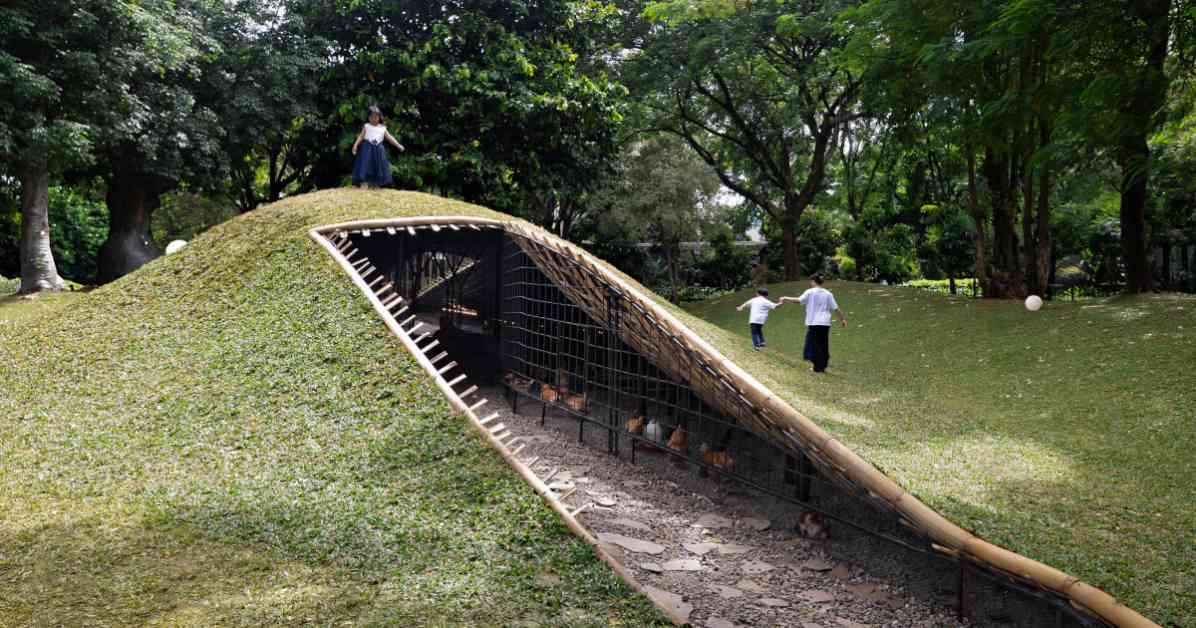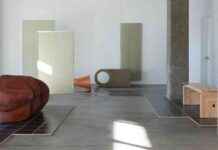Bali-based design studio RAD+ar has embarked on a groundbreaking mission to revolutionize sustainability by going beyond traditional architectural concepts. Their latest project, the Chicken Hero Pavilion, is a shining example of this innovative approach, drawing inspiration from green principles to create a practical solution that can be easily replicated. This unique structure not only showcases the power of well-designed initiatives but also highlights the potential impact of a micro circular economy within a community.
The Chicken Hero Pavilion, a temporary installation located in Jakarta’s Urban Forest, was spearheaded by architects Antonius Richard Rusli and Daniel Susanto. The clever integration of a chicken coop into the landscape, disguised as a natural hill, provided visitors with a harmonious space to interact with the animals. Spanning an impressive 9,687 square feet, this organic-shaped structure featured a tunnel leading to a cozy chicken coop, creating a serene environment for both humans and birds alike.
Central to the design of the Chicken Hero Pavilion was a focus on space efficiency, crucial for the well-being of the resident chickens. The structure was covered with reclaimed bamboo, forming a unique green roof that allowed for soft, indirect daylight to filter through. This not only created a pleasant atmosphere but also ensured a comfortable environment for visitors and feathered inhabitants alike.
Over the course of its four-week existence, the Chicken Hero Pavilion served as more than just a tourist attraction—it became an active contributor to the local economy. The on-site coops functioned as food waste processors for six nearby restaurants, producing approximately 40 eggs per day. These eggs were then distributed to the restaurants and visitors of the coop, who were able to take home a live harvesting memento—a unique and sustainable souvenir.
RAD+ar, the creative minds behind this visionary project, shared insights into the sustainable practices employed within the Chicken Hero Pavilion. “All dried leaves and organic tree waste were utilized as bedding for the chickens, simultaneously reducing humidity. The composted food waste and dried leaves were transformed into garden and commercial compost, harvested every three days,” they explained. This innovative approach not only minimized waste but also contributed to the local ecosystem in a meaningful way.
The initiative behind the Chicken Hero Pavilion was a self-driven effort by the design firm, aimed at promoting independent backyard poultry farming as a means to combat food waste in Indonesia. As the country grapples with high levels of food loss and waste, initiatives like these play a crucial role in addressing this pressing concern. By showcasing how eco-friendly design can blend functionality, comfort, and minimal environmental impact, the team hopes to inspire similar projects that benefit both the environment and the community at large.
To learn more about the team behind this transformative design, visit RAD+ar’s website and explore their portfolio of innovative projects that push the boundaries of sustainable architecture and design.












